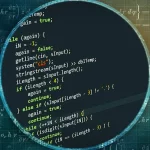
Advancements in Transcriptomics: A Glimpse into Modern Technologies and Computational Progress
October 12, 2023Introduction: Transcriptomics, a crucial sub-discipline within genomics, primarily concerns itself with the study of transcriptomes—the complete set of RNA sequences in cells. In the recent past, this domain has seen a surge in technological and methodological progress. This essay provides an in-depth look at some of these advancements and their implications.
Spatial Transcriptomics: A New Horizon Spatial transcriptomics, a relatively new facet in the realm of transcriptomics, has brought forward the capability to map gene expressions in high-resolution within their inherent spatial settings. Such advancements render the data from traditional bulk sequencing more insightful. Notably, this technological leap has furthered research in various areas ranging from understanding tissue structures to deciphering patterns in infectious diseases. Moreover, spatial transcriptomics benefits immensely from the integration of microfluidics, paving the way for high-throughput single-cell RNA sequencing.
The Shift to Long-Read RNA Sequencing As transcriptomics transitioned from short-read to long-read RNA sequencing, a broader and clearer view of genomes and transcriptomes became accessible. The upgraded nanopore technologies have significantly refined the accuracy and efficiency of long-read sequencing. This has also enriched the single-cell RNA isoform analysis, opening more windows into the domain of single-cell transcriptomics.
High-Throughput Single-Cell Transcriptomics: A Game Changer Another leap in transcriptomics has been the emergence of high-throughput single-cell transcriptomics. This advancement allows transcriptome profiling at an unprecedented scale, enabling researchers to classify and even discover new cell types and map out cell lineages.
Computational Strides Matching Technological Evolution No advancement is complete without the computational power to back it. As transcriptomics has grown, so has the computational might supporting it. Modern algorithms and machine learning techniques are being tailored to tackle the complexities of the data it produces. With AI methods, especially those using transformer models, diving deep into spatial transcriptomics, the future seems promising.
Conclusion: The interplay between state-of-the-art technologies and computational prowess has elevated transcriptomics to a novel paradigm. This fusion not only offers a deeper understanding of biological processes and maladies at a detailed level but also hints at the limitless possibilities the future holds for transcriptomics. As we continue to witness advancements in sequencing and computational tools, the horizon of discoveries in the transcriptomics landscape broadens.

















